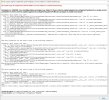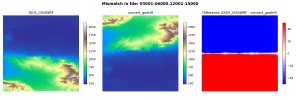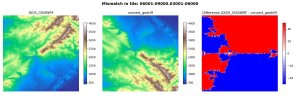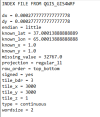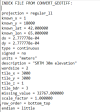Hello WRF team. I am pretty new to WRF modelling and I'm trying to update DEM data in the wrf model. I am using SRTM 30m data. I have a single large .tif file that covers my model domain and I am trying to convert it using the "convert_geotiff" module (GitHub - openwfm/convert_geotiff: A commandline utility for converting GeoTIFF files for use in WRF). It specifies that the grid points must be less than 99999 on each axis and the file I am trying to convert is approx. 97000*72000 grid points which is well under the maximum limit. But when I run the command "convert_geotiff -b 3 -w 2 -t 100 -s 1 -m -9999 -u "meters" -d "SRTM 30m" SRTM.tif" it gives "segmentaton fault (core dumped)". please help me in this regard.
I want to know how to fix this error and what i am doing wrong?
Also if there is any alternative way to convert geotiff files to binary?
I also could not understand the point that some other users have mentioned, that you can convert files in smaller parts by placing them in subdirectories and then use in wps. How is this possible? the geogrid expects all the binary files in single directory as far as I know. separately converting files will generate multiple subdirectories and index files.
I want to know how to fix this error and what i am doing wrong?
Also if there is any alternative way to convert geotiff files to binary?
I also could not understand the point that some other users have mentioned, that you can convert files in smaller parts by placing them in subdirectories and then use in wps. How is this possible? the geogrid expects all the binary files in single directory as far as I know. separately converting files will generate multiple subdirectories and index files.

